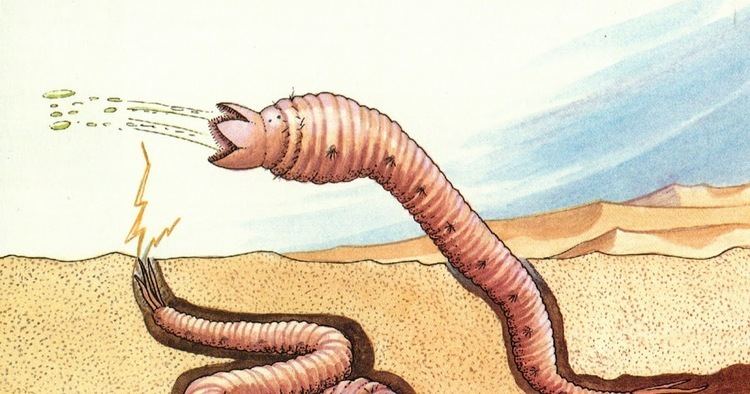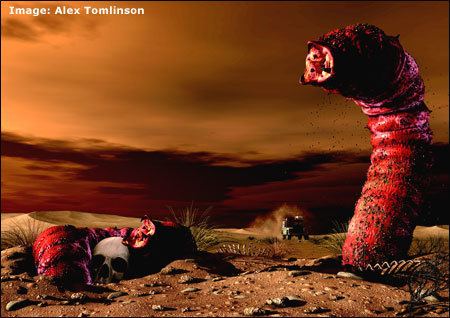 | ||
the mongolian death worm urban legend profile
The Mongolian death worm (Mongolian: олгой-хорхой, olgoi-khorkhoi, "large intestine worm") is a creature alleged to exist in the Gobi Desert.
Contents
- the mongolian death worm urban legend profile
- Mongolian death worm trailer
- Appearance
- Habitat and behavior
- Mentions investigations
- References

The creature first came to Western attention as a result of Roy Chapman Andrews's 1926 book On the Trail of Ancient Man. The American paleontologist was not convinced by the tales of the monster that he heard at a gathering of Mongolian officials: "None of those present ever had seen the creature, but they all firmly believed in its existence and described it minutely."

Mongolian death worm trailer
Appearance
The worms are purportedly between two and five feet long and is thick-bodied.

In On the Trail of Ancient Man, Andrews cites Mongolian Prime Minister Damdinbazar who in 1922 described the worm:

It is shaped like a sausage about two feet long, has no head nor leg and it is so poisonous that merely to touch it means instant death. It lives in the most desolate parts of the Gobi Desert.
In 1932, Andrews published this information again in the book The New Conquest of Central Asia, adding: "It is reported to live in the most arid, sandy regions of the western Gobi." Andrews, however, did not believe in the creature's existence.
Habitat and behavior
The worm is said to inhabit the western or southern Gobi. In the 1987 book Altajn Tsaadakh Govd, Ivan Mackerle described it as travelling underground, creating waves of sand on the surface which allow it to be detected. The Mongolians say it can kill at a distance, either by spraying a venom at its prey or by means of electric discharge. They say that the worm lives underground, hibernating most of the year except for June and July, when it becomes active. It is also reported that it most often comes to the surface when it rains and the ground is wet.
The Mongolians believe that touching any part of the worm will cause almost instant death and tremendous pain. It has been told that the worm frequently preyed on camels and laid eggs in its intestines, and eventually acquired the trait of its red-like skin. Its venom supposedly corrodes metal and local folklore tells of a predilection for the color yellow. The worm is also said to have a preference for local parasitic plants such as the goyo.
